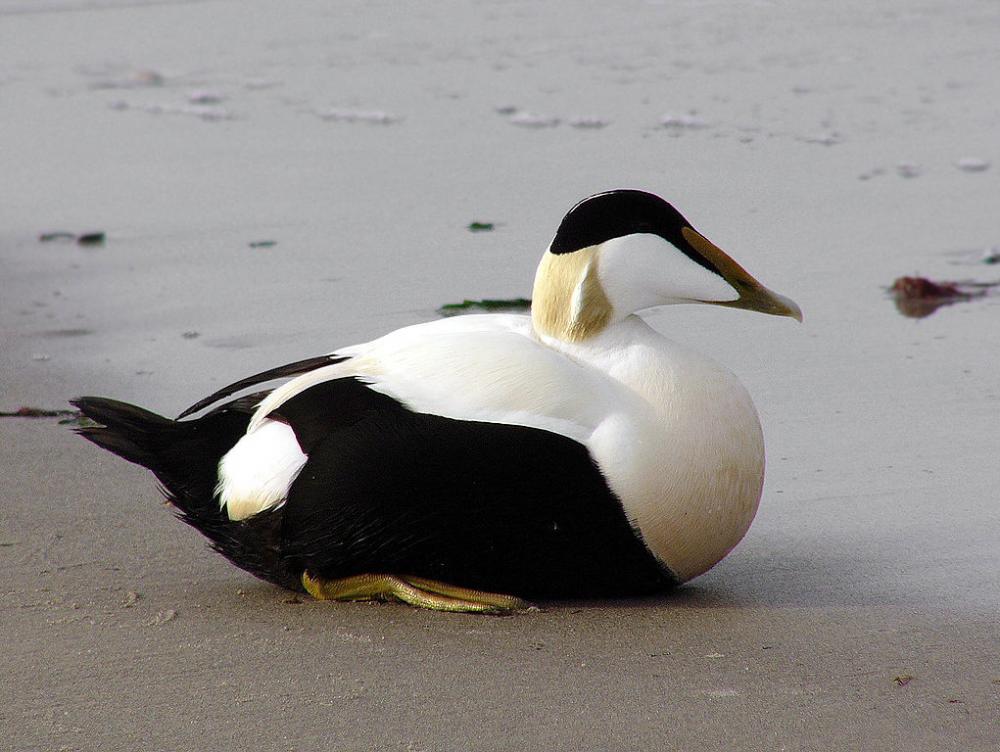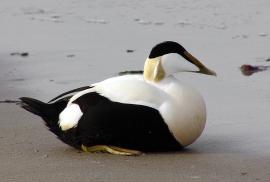Guide to Boreal Birds
Overview
Eiders are best known for their down -- very soft feathers plucked from the breast of the female. For hundreds of years eiderdown has been gathered from nests in northern Europe and used to line pillows, quilts, and parkas. Only eiders in the Arctic are strongly migratory; in the warmer parts of their range they may remain near the breeding grounds all year. Their principal foods are mussels and other shellfish; the birds gather in huge rafts where these are available. Since the persecution of eiders ended after the turn of the century, there has been a spectacular increase along the Maine coast, and they are once again nesting there in large numbers.
Description
23-27" (58-69 cm). Our largest duck. Male has black underparts; white back; white head and breast; dark crown; greenish tinge on back of head. Female is mottled brown with barred flanks. Long sloping bill gives bird a distinctive profile. Usually holds bill pointing slightly down toward surface of water. See King Eider.
Voice
During courtship the male gives a hollow moan and various cooing notes. Female quacks.
Nesting
4-7 olive or buff eggs in a substantial mass of grass thickly lined with down. Often several pairs form a loose colony.
Habitat
Rocky coasts and coastal tundra.
Range/Migration
Breeds on Arctic coasts of Alaska and Canada and south from Maritimes to Massachusetts. Winters south along Pacific Coast from Alaska to Washington and along Atlantic Coast to Long Island, occasionally farther. Also northern Eurasia.



